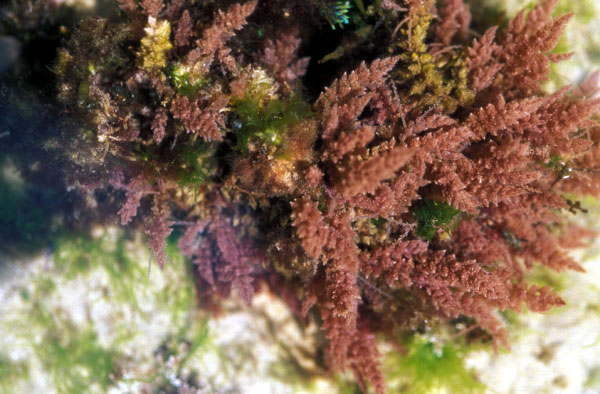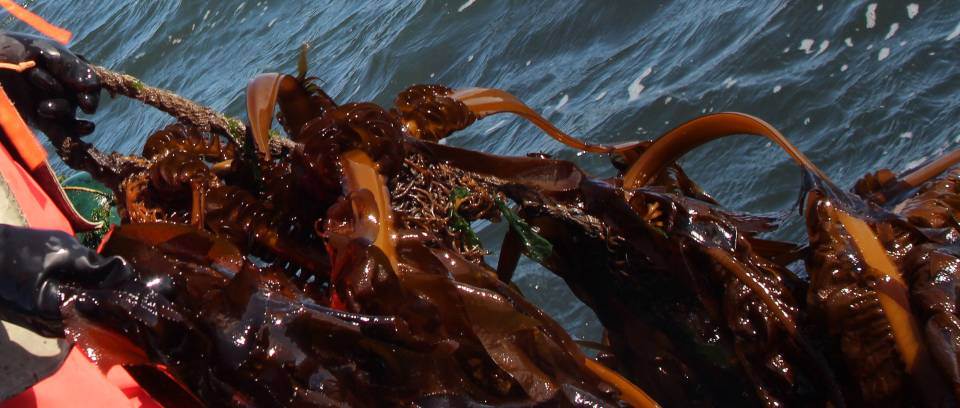The success of commerical cultivation of Kappaphycus seaweed in several countries is directly related to the easy vegetative reproduction of this species, high growth rate, simple cultivation techniques and their uses in different segments of the food, pharmaceutical, cosmetic and agricultural industries.
Digital library
-
-
Summary of the seaweed Furcellaria lumbricalis
-
A polysaccharide (Sarg) extracted from the brown marine alga Sargassum stenophyllum was studied for its antivasculogenic effects in both in vivo and in vitro assays, as well as for its capacity to modify embryonic morphogenetic processes endogenously regulated by bFGF, a well-known angiogenic stimulator. The antivasculogenic activity of Sarg (6–1500 μg/implant) was evaluated in a chick yolk sac membrane assay and the embryonic morphogenesis was measured as the percentage cephalic length. Sarg alone (96–1500 μg/implant) and co-administered with hydrocortisone (HC; 156 μg/implant) decreased the vitelline vessel number by 23–100% and 54–100% respectively. The polysaccharide potentiated the antivasculogenic effect of HC (42% inhibition). Basic fibroblast growth factor-stimulated vasculogenesis (141% of vessels as compared to control) was partially reversed by Sarg. The treatment with Sarg also decreased the percentage cephalic length of 3.5- and 4-day chick embryos (as cultured in vivo and in vitro, respectively), uncoupled from any impairment in the body shape or embryotoxic effect. Due to polyanionic characteristics of Sarg, which are similar to those seen in the heparin molecule, we suggest that this polysaccharide should modulate the activity of heparin-binding vascular growth factors (such as bFGF, which also acts as a morphogen) mimetically interfering with heparan sulfate proteoglycans during microvessel formation.
-
Different propagation techniques for cultivationof vegetativeGigartina skottsbergiifronds were testedusing a system of suspended ropes, to which inoculantswere attached. Our results showed that triangular fragmentsobtained from the circularG. skottsbergiithalli producedharvestable frond of 800 cm2after 8 months. In contrast,inoculants of intact juvenile fronds of comparable sizeneeded at least 10 months to reach the same size. A controlexperiment with spores developing on an artificial substrateshowed that 20 months were needed to reach a surface of500 cm2, confirming the superiority of our fragment culturesystem. A pilot study demonstrated that with a density ofsix fronds m−1of farming line, the proposed system can beeconomically interesting for local fishermen.
-
Next generation sequencing (NGS) technologies have revolutionized many areas of biological research due to the sharp reduction in costs that has led to the generation of massive amounts of sequence information. Analysis of large genome data sets is however still a challenging task because it often requires significant computer resources and knowledge of bioinformatics. Here, we provide a guide for an uninitiated who wish to analyze high-throughput NGS data. We focus specifically on the analysis of organelle genome and metagenome data and describe the current bioinformatic pipelines suited for this purpose.
-
SSA is completing initial development and validation of a seaweed modeling tool within a geographical information system to support the growth of seaweed farms in the United States. Seaweed AquaModel was developed exclusively by our team and some of the collaborators listed below and is presently a "beta" software system undergoing preliminary testing in Hood Canal, Washington State. It is a companion software product of a well-known fish farm modeling system known as AquaModel. Used by NOAA National Ocean Survey and several foreign governments, Fish AquaModel calculates the growth, waste production, benthic and water column effects of floating fish farms. The Seaweed AquaModel calculates the growth and nutrient assimilation of macroalgae farms and effects on carbonate chemistry.
Specifically, Seaweed AquaModel simulates nutrient flux by the cultured macroalgae as well as nitrogen-phytoplankton-zooplankton kinetics in ambient waters. The system is designed to help farmers, investors and regulators of seaweed farms select optimal sites for farming and determine appropriate size scales of operations. The simulation model generates dynamic maps of conditions within and around the kelp farm, helping users assess adverse interactions with existing uses along the coastline and avoid placing farms in waters where physical and biological conditions at times of the year are detrimental to operations and production. Examples of factors that are critical for seaweed farm site selection that are either inputs or outputs of the calculations include water quality (e.g. algal blooms, pollutants), temperature, nutrient concentration, flow rates at different depths, wave height and/or wind speed.
The goal of the modeling tool is to help direct siting and spacing for optimal development of kelp farms throughout North America but initially in the Northeast United States, the Gulf of Maine where commercial farms are already operating, and in parts of Puget Sound including the Strait of Juan de Fuca, where kelp farms are absent, but where conditions for developing farms appear at first glance to be most promising. We anticipate altering the existing architecture of Seaweed AquaModel to be more user friendly than the research version presently used that has components designed for ocean acidification research. The software will be available in self-installing Windows format including a free basic version sufficient for siting and analysis of individual farms. A far field version will also be available commercially for analysis of the effects of several farms over large coastal areas.
-
Integrated multitrophic aquaculture (IMTA) has been proposed as a solution to nutrient enrichment generated by intensive fish mariculture. In order to evaluate the potential of IMTA as a nutrient bioremediation method it is essential to know the ratio of fed to extractive organisms required for the removal of a given proportion of the waste nutrients. This ratio depends on the species that compose the IMTA system, on the environmental conditions and on production practices at a target site. Due to the complexity of IMTA the development of a model is essential for designing efficient IMTA systems. In this study, a generic nutrient flux model for IMTA was developed and used to assess the potential of IMTA as a method for nutrient bioremediation. A baseline simulation consisting of three growth models for Atlantic salmon Salmo salar , the sea urchin Paracentrotus lividus and for the macroalgae Ulva sp. is described. The three growth models interact with each other and with their surrounding environment and they are all linked via processes that affect the release and assimilation of particulate organic nitrogen (PON) and dissolved inorganic nitrogen (DIN). The model forcing functions are environmental parameters with temporal variations that enables investigation of the understanding of interactions among IMTA components and of the effect of environmental parameters. The baseline simulation has been developed for marine species in a virtually closed system in which hydrodynamic influences on the system are not considered. The model can be used as a predictive tool for comparing the nitrogen bioremediation efficiency of IMTA systems under different environmental conditions (temperature, irradiance and ambient nutrient concentration) and production practices, for example seaweed harvesting frequency, seaweed culture depth, nitrogen content of feed and others, or of IMTA systems with varying combinations of cultured species and can be extended to open water IMTA once coupled with waste distribution models.
-
According to the Sea Change Strategy (2006), the Irish seaweed production and processing sector will be worth €30 million per annum by 2020. If this target is to be reached, then the sector must capitalise on the existing wild resource and it must necessarily expand seaweed aquaculture to augment supplies of higher value seaweeds and to provide product into the abalone and urchin farming sector, which has an estimated need of 2,000 tonnes of wet product per annum, at full production capacity. Seaweed aquaculture in Ireland is limited to only a small number of licensed sites at the current time. According to the most recent data (1997) supplied by the Department of Communications, Marine and Natural Resources (DCMNR) and the Department of Agriculture Fisheries and Food (DAFF) to BIM, there is one algal aquaculture licence in Waterford, two in Cork and one in Galway. That said, at least three further licences have now been applied for, and one has been approved in Kerry. It is hoped that work undertaken during the course of this research project, PBA/SW/07/001(01), ‘Development and demonstration of viable hatchery and ongrowing methodologies for seaweed species with identified commercial value’, will facilitate the licensing and further development of seaweed culture in Ireland. By perfecting culture techniques and making information available to stakeholders, it is anticipated that further engagement can be facilitated to move the seaweed aquaculture sector forward in Ireland.
Ireland’s seaweed and biotechnology sector is currently worth €18 million per annum (Morrissey et al., 2011), it processes 36,000 tonnes of seaweed (wild product) and employs 185 full time equivalents (Morrissey et al., 2011). The product source is currently limited to the wild resource and product range is limited in the main to high volume, low value products such as animal feeds, plant supplements, specialist fertilisers and agricultural products. A smaller proportion goes into higher value products such as foods, cosmetics and therapies. In order to gain more from this industry, it is proposed that processors move down the value chain in order to achieve higher returns from their product. In order to do this, it is suggested that the industry needs to introduce automation and more sophisticated processing and packaging techniques. Reducing labour costs is considered a key driver of increased competitiveness in the sector. Moving away from the more traditional wild species and applying aquaculture techniques to create sustainable year round supply is also key to industry development.
Laminaria digitata and Palmaria palmata are two seaweed species identified as offering opportunity for cultivation in this project. Laminaria can be grown on long lines at sea, while at the current time, vegetative growth of Palmaria in tanks is the growth method that has shown success. Laminaria digitata can be fed as a macroalgivore diet to farmed abalone and urchins. On the other hand, Palmaria palmata is considered a food delicacy and most of the national production is sold and consumed domestically (16-30 tonnes), however there is increasing demand from Spanish and French markets for the product. National production of Laminaria is likely to be the same or lower than Palmaria. Palmaria can also be fed to abalone. The combined requirement for these two seaweeds from the current macroalgivore sector in Ireland is 1,500-2,000 tonnes of product. While the requirement to feed macroalgivores is significant in its need for volume production of seaweed from farming, the production of significant tonnage should not allow for market distortion in terms of the value added/processed product. Dried and packaged bulk
Palmaria makes of the order of €16-€19/kg while Laminaria typically makes €10-€16/kg for bulk quantities.The value added opportunity for Palmaria is significant and pickers of wild product can augment their supplies by cultivating product. New technologies should be investigated to allow further automation of processes, including washing, drying, milling and packaging. A variety of Agencies now exist where linkages can be established for new product development, in particular, for example, in the increasingly fashionable area of functional foods, for example, the BIM Seafood Development Centre, Clonakilty, The Food Technology Centre, St Angelas College, Sligo and Spice O’ Life Ltd in Dunmanway, Cork.
Ireland is trading on its ‘clean green’ image. Seaweed is used in spas and in cosmetics. New food products can be marketed using the promise of the ‘Ireland Brand’. This brand stands for provenance, truth, good value and quality. Ireland has a great number of good restaurants, farmer’s markets and established export markets for seafood products which can be capitalised on by innovative thinking
-
The marine benthic algal flora of Clare Island, off County Mayo, western shore of Ireland, was investigated; collections of intertidal and subtidal marine algae were made at 16 sites along the eastern and southern shores in the years 1990, 1993 and 2000–2002. The data and observations obtained were compared with the results of a similar survey conducted by Arthur Disbrowe Cotton in 1910–1911. Considering the results of the original survey and the new survey together, the marine algal flora of the island currently totals 293 species; 224 species were recorded by Cotton in the original survey, whereas 223 species were identified in the present study. Most species are common to the original and the new list and the main differences are easily explainable; the new survey used SCUBA diving, which allowed the collection of several subtidal species not collected in 1910, and Cotton reported several microscopic green and brown algae, usually difficult to recognise in the field, which were not rediscovered. The most remarkable differences consist in the current presence of some large intertidal brown algae (Bifurcaria bifurcata, Cystoseira foeniculacea and Cystoseira nodicaulis) that were not reported in the survey of 1910. Two algae, Codium fragile subsp. tomentosoides and Asparagopsis armata, were introduced in Europe after the original survey. At present, the benthic algal assemblages of Clare Island still have basically the same structure and distribution as in 1910 and, if compared with other coastal areas of Europe, the intertidal marine environment of Clare Island appears remarkably well conserved.
-
Mariculture accounts for about one-half of total aquaculture production by weight. About one-half of the mariculture production consists of aquatic plants, with the remainder being fish and invertebrates. Nearly all of mariculture is inshore. In contrast, offshore mariculture, which is practised in the open sea with significant exposure to wind and wave action and with equipment and servicing vessels operating in severe sea conditions from time to time, is in its infancy and production is almost exclusively of fish and shellfish. There is an impetus for mariculture to move to the unprotected waters of the open sea. Issues at the local level include competition for space, water quality problems, and a negative public perception of mariculture’s environmental and aesthetic impacts. At the global level, there is concern for food security with expanding population along with the conviction that the potential of the world’s oceans to supplement the food supply is vastly underutilized. Prospecting for suitable locations is a critical part of spatial planning for offshore mariculture’s near-future development. Thus, the objectives of this technical paper are to provide measures of the status and potential for offshore mariculture development from a spatial perspective that are comprehensive of all maritime nations and comparable among them, to identify nations not yet practising mariculture that have a high offshore potential for it, and to stimulate interest in detailed assessments of offshore mariculture potential at national levels.Estimates of offshore mariculture potential are based on key assumptions about its near-future development: offshore mariculture will develop within exclusive economic zones (EEZs), will mainly use culture systems modified from inshore mariculture, and will mainly employ species with already proven culture technologies and established markets. These assumptions set the stage for the identification of analytical criteria. Thus, EEZs were used as spatial frameworks to define the limits of national offshore mariculture development. Potential was defined by the depth and current speed limits on offshore cages and longlines, the cost-effective area for offshore mariculture development, and the favourable conditions for grow-out of representative species: cobia (Rachycentron canadum), Atlantic salmon (Salmo salar) and blue mussel (Mytilus edulis), and integrated multitrophic aquaculture (IMTA) of the last two species. Verification and comparison with existing mariculture showed that, despite the limitations of the data, the results are indicative of offshore mariculture potential within the specified criteria.Offshore mariculture potential is large. At present, 44 percent of maritime nations with 0.3 million kilometres of coastline are not yet practising mariculture. About half of the mariculture nations have outputs of less than 1 tonne/kilometre of coastline. About one-half of inshore mariculture production consists of aquatic plants, but there is little production of plants offshore. Scenarios using 5 and 1 percent of the area meeting all of the criteria for each of the three species showed that development of relatively small offshore areas could substantially increase overall mariculture production. Improvements in culture technologies allowing for greater depths and increased autonomies, as well as the further development of free-floating or propelled offshore installations, would add greatly to the area with potential for offshore mariculture development. Remote sensing for the sustainable development of offshore mariculture is included as Annex 3 to this publication in recognition of the importance of remote sensing as a source of data for spatial analyses to assess potential for offshore mariculture, and also for zoning and site selection as well as for operational remote sensing to aid mariculture management.





